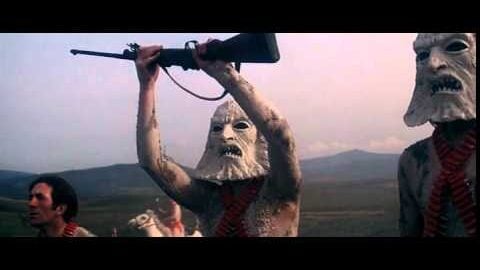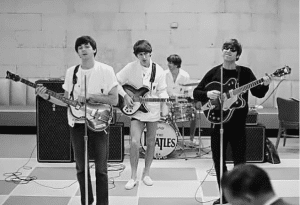Forgotten 1970s Sci-Fi Movies That Deserve a Second Look

via Luke Muehlhauser / YouTube
Science fiction in the 1970s was a decade of wild imagination and experimentation, where filmmakers pushed boundaries both thematically and visually. It was an era when directors dared to ask big questions about technology, humanity, and the future—sometimes with big budgets, sometimes with barely any at all. Beneath the era’s flashy blockbusters, the decade was quietly nurturing films that would influence later classics in ways few casual viewers realize today.
While titles like Star Wars, Alien, and Close Encounters of the Third Kind rightfully dominate the conversation, they only represent a fraction of what 1970s sci-fi had to offer. The genre during this time was as varied as the decade itself—ranging from dystopian nightmares and philosophical mind-benders to offbeat adventures and eerie cautionary tales. Some of these films found loyal cult audiences, while others vanished into obscurity despite their creativity and daring ideas.
Revisiting those forgotten titles isn’t just an exercise in nostalgia; it’s a reminder of how fertile the decade truly was for speculative storytelling. Many of these underappreciated gems tackled issues that remain startlingly relevant today—corporate greed, environmental collapse, and the loss of human identity in a mechanized age. These are the 1970s sci-fi movies that deserve another look, not because they were overlooked curiosities, but because they still have something to say half a century later.
The Andromeda Strain (1971)
Released in 1971, The Andromeda Strain trades in laser guns and alien invasions for something far more chilling — a viral outbreak. Set in a near-future Nevada desert, the story unfolds inside a sterile research facility where scientists race to contain an extraterrestrial microbe that’s wiped out an entire town. It’s a quiet, procedural thriller that feels eerily familiar to modern audiences, with its claustrophobic laboratories, masked researchers, and scenes of clinical panic. Long before “pandemic” became part of everyday vocabulary, this film imagined what a scientific crisis might truly look like.
Director Robert Wise brought Michael Crichton’s 1969 novel to life with striking realism and a dedication to detail that set it apart from the era’s more fantastical works. Crichton — who would later write Jurassic Park and Sphere — essentially created the blueprint for the “techno-thriller” here. Every frame treats science as both a savior and a threat, and the characters behave like real professionals under pressure, not stock movie heroes. The tone is restrained, serious, and committed to logic, making it one of the decade’s most intelligent depictions of crisis management.
Despite strong box-office numbers for its time, The Andromeda Strain eventually drifted out of the mainstream conversation. Its clinical atmosphere, while impressive, lacked the popcorn appeal of later Crichton-inspired blockbusters. Yet revisiting it now, in a post-COVID world, gives the movie new relevance. What once seemed cold and procedural now feels hauntingly prophetic — and worth rediscovering.
Logan’s Run (1976)
If The Andromeda Strain showed science as humanity’s last defense, Logan’s Run imagined technology as our gilded cage. Released in 1976, it envisioned a glittering domed city where pleasure reigns and no one lives past thirty. Citizens spend their short lives in luxury, only to be ritually executed when their time expires. With its glowing sets, glassy malls, and retro-futurist costumes, the film captures the ’70s dream of utopia gone wrong — a society so obsessed with perfection that it willingly erases maturity.
The film follows Logan, a “Sandman” whose job is to eliminate those who try to escape their fate. When he’s ordered to infiltrate the rebels known as “runners,” he ends up questioning the system itself and flees into the ruined outside world. Adapted from the 1967 novel by William F. Nolan and George Clayton Johnson, Logan’s Run mixes philosophy with pulp adventure, confronting themes of freedom, identity, and blind conformity. Beneath the glitter, it’s a reflection of a generation afraid of aging, consumerism, and societal control.
At its release, the movie was a hit, grossing more than three times its budget and even earning an Oscar for visual effects. But its ideas — and dated aesthetics — eventually fell out of fashion once Star Wars arrived the following year. Still, Logan’s Run remains a fascinating artifact from a moment when sci-fi wasn’t afraid to be both weird and thoughtful. Its earnestness may feel quaint today, but its message about questioning comfort and control still lands.
Soylent Green (1973)
Few dystopias from the 1970s feel as disturbingly relevant as Soylent Green. Set in the year 2022, it presents an Earth collapsing under the weight of overpopulation, pollution, and corporate greed. Charlton Heston plays a weary detective investigating the death of a powerful executive — a case that uncovers a horrifying secret about the food source sustaining the world’s poor. Even if you’ve never seen the movie, you probably know its infamous revelation: “Soylent Green is people.”
The film takes its loose inspiration from Harry Harrison’s 1966 novel Make Room! Make Room!, though the book was less gruesome and more grounded in social commentary. Director Richard Fleischer used the adaptation to craft a grim vision of urban decay, complete with oppressive crowds, heat-stained apartment blocks, and a future where dignity is rationed as tightly as food. The result is equal parts detective noir and environmental warning, a hybrid that feels eerily plausible in hindsight.
Though it was a modest hit, Soylent Green never quite reached the same cultural status as its peers. Yet its influence lingers — not just in parodies or culinary jokes, but in its unflinching portrait of a world that’s traded morality for survival. Half a century later, its message about consumption and exploitation hits even harder, making it one of the decade’s most haunting rediscoveries.
THX 1138 (1971)
Before Star Wars made George Lucas a household name, he directed something far bleaker: THX 1138. Released in 1971, it imagines a sterile underground society where emotion is suppressed through medication and individuality is forbidden. The film’s protagonist, identified only by his number, begins to feel again after his partner stops taking her prescribed drugs — a small act of rebellion that spirals into a desperate quest for freedom.
Stripped of spectacle and filled with minimalist white spaces, THX 1138 is a study in control and alienation. Lucas uses the absence of color and sound to build a hypnotic sense of unease, forcing viewers to sit with the suffocating emptiness of a world that has sacrificed humanity for order. Robert Duvall’s restrained performance anchors the film, portraying a man awakening to consciousness in a place designed to erase it. It’s more art installation than blockbuster, but that’s part of its enduring power.
While its abstract style alienated audiences at the time, THX 1138 has since gained recognition as a visionary debut. It’s not an easy film — slow, quiet, and unforgiving — yet its critique of dehumanizing systems feels strikingly current. In many ways, it’s the purest expression of 1970s sci-fi ambition: daring, introspective, and unconcerned with pleasing the crowd.
Zardoz (1974)
If there’s one film that proves how unpredictable 1970s sci-fi could be, it’s Zardoz. Directed by John Boorman in 1974, it stars Sean Connery in one of cinema’s most infamous costumes — a red loincloth, thigh-high boots, and a chest strap. The film takes place in a far-future world ruled by immortal elites known as Eternals, who live in isolation while a brutal underclass serves them. When Connery’s character, Zed, rebels against this strange order, he unravels a mystery involving a giant flying stone head that “speaks” to the masses.
Boorman’s vision is nothing short of audacious. Part philosophical allegory, part psychedelic fever dream, Zardoz mixes social satire with metaphysical weirdness. Its dialogue swings between poetic and absurd, its visuals between stunning and ridiculous. For all its eccentricity, the movie is deeply earnest about exploring immortality, control, and the meaning of existence — even if it often feels like it’s doing so through a haze of incense and chaos.
Initially dismissed as nonsensical, Zardoz has since become a cult favorite for fans of experimental cinema. Beneath its bizarre imagery lies a surprisingly thoughtful meditation on mortality and freedom. It’s the kind of movie that could only have been made in the 1970s — fearless, flawed, and impossible to forget once you’ve seen it.
















